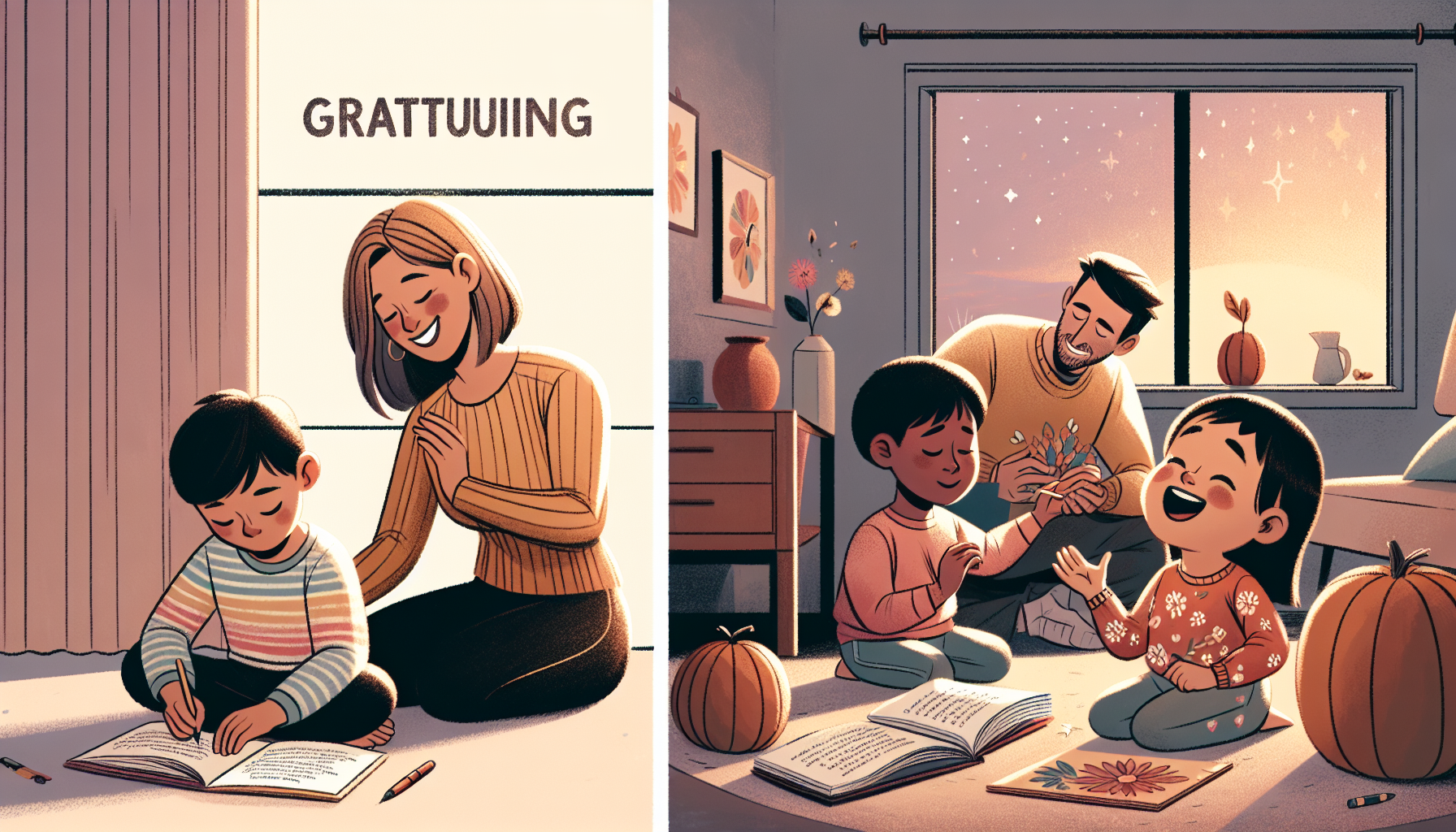“`html
Encouraging Children to Practice Gratitude
Introduction
In today’s fast-paced world, it can be easy for children to take things for granted. However, teaching kids to practice gratitude is more than just saying “thank you.” It’s about fostering emotional development, cultivating empathy, and building an appreciation for the people and experiences that enrich their lives. For parents, nurturing gratitude in children can be a powerful way to strengthen family bonds and support their child’s overall well-being.
In this article, we’ll explore why gratitude is essential for a child’s emotional and social growth and share practical parenting strategies to encourage this valuable habit. By weaving gratitude into daily life, parents can help their children develop a positive mindset and stronger interpersonal skills.
Why Gratitude Matters for Children
Connecting Gratitude to Emotional Development
Gratitude is more than an act of politeness—it’s a cornerstone of emotional development. Research shows that children who regularly practice gratitude tend to experience greater happiness, improved self-esteem, and stronger relationships. Feeling thankful encourages kids to focus on the positive aspects of their lives, promoting a sense of emotional safety and resilience.
According to principles of cognitive-behavioral therapy (CBT), gratitude helps shift attention away from negative thoughts and fosters a balanced perspective. This is especially important for children as they navigate challenges and build their sense of self-worth.
The Role of Gratitude in Social Skills
Gratitude also plays a critical role in developing healthy social interactions. When children express appreciation, they strengthen their connections with others and foster an environment of mutual respect. By recognizing the efforts of their peers and family members, kids learn to value collaboration and empathy—key components of building strong relationships.
Parenting Strategies to Foster Gratitude
1. Model Gratitude in Everyday Life
Children learn by example, so one of the most effective ways to teach gratitude is by modeling it yourself. Make it a habit to express genuine thanks in your daily interactions. Whether it’s thanking a family member for helping with dinner or appreciating a sunny day, your actions will inspire your child to follow suit.
2. Create a Gratitude Routine
Establishing a routine centered around gratitude can help make it a natural part of your child’s life. For example:
- Encourage your child to share one thing they’re thankful for at the dinner table.
- Start a family gratitude journal where everyone writes down their positive experiences each week.
- Incorporate gratitude into bedtime routines by asking your child to reflect on the best parts of their day.
3. Teach the Value of Giving
Helping others is a powerful way for children to experience gratitude firsthand. Encourage your child to participate in acts of kindness, such as donating toys, helping a neighbor, or volunteering for a cause they care about. These experiences help kids appreciate their own blessings while fostering a sense of autonomy and self-expression.
4. Recognize and Celebrate Effort
Acknowledging your child’s efforts, rather than just their achievements, is crucial. For instance, if your child works hard on a project, express gratitude for their dedication and perseverance. This reinforces the idea that their actions have value, promoting a growth mindset and intrinsic motivation.
5. Use Storytelling to Inspire Gratitude
Stories are a fantastic tool for teaching complex concepts like gratitude. Share stories—whether from books, movies, or your own experiences—that highlight the importance of being thankful. Discuss the characters’ actions and emotions to help your child understand the impact of gratitude in different situations.
Practical Recommendations for Parents
Make Gratitude Interactive
Turn gratitude into a fun and interactive activity. Create a “gratitude tree” where your child can write what they’re thankful for on paper leaves. Not only is this engaging, but it also gives kids a visual reminder of the many positive aspects of their lives.
Encourage Journaling
For older children, keeping a gratitude journal can be an excellent way to reflect on their day. Encourage them to write about three things they’re grateful for and why. This practice not only enhances emotional well-being but also helps them develop deeper self-awareness.
Celebrate Small Moments
While it’s easy to feel grateful for big events, teaching children to appreciate small, everyday moments is equally important. Encourage your child to notice the beauty in simple pleasures, such as a kind word from a friend or a sunny morning. This mindset fosters mindfulness and a deeper appreciation for life’s little joys.
Be Patient and Consistent
Developing a habit of gratitude takes time and consistency. Be patient with your child and celebrate their progress, no matter how small. Over time, practicing gratitude will become a natural part of their emotional toolkit.
Conclusion
Encouraging children to practice gratitude is one of the most impactful parenting strategies for fostering emotional development and positive relationships. By modeling gratitude, creating routines, and celebrating small moments, parents can help their children build a foundation of appreciation and empathy that will serve them throughout their lives.
Remember, gratitude is a skill that grows with practice. By incorporating these strategies into your daily life, you’re not only teaching your child to say “thank you” but also helping them develop a lifelong habit of recognizing and valuing the good in their world.
For more parenting tips and resources, explore our library of articles on emotional development and effective communication.
“`

